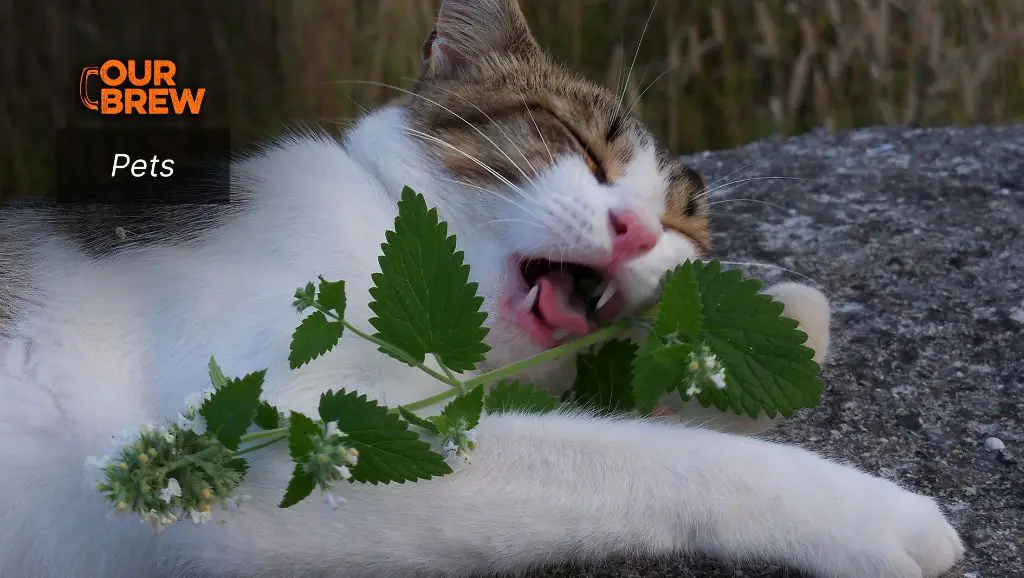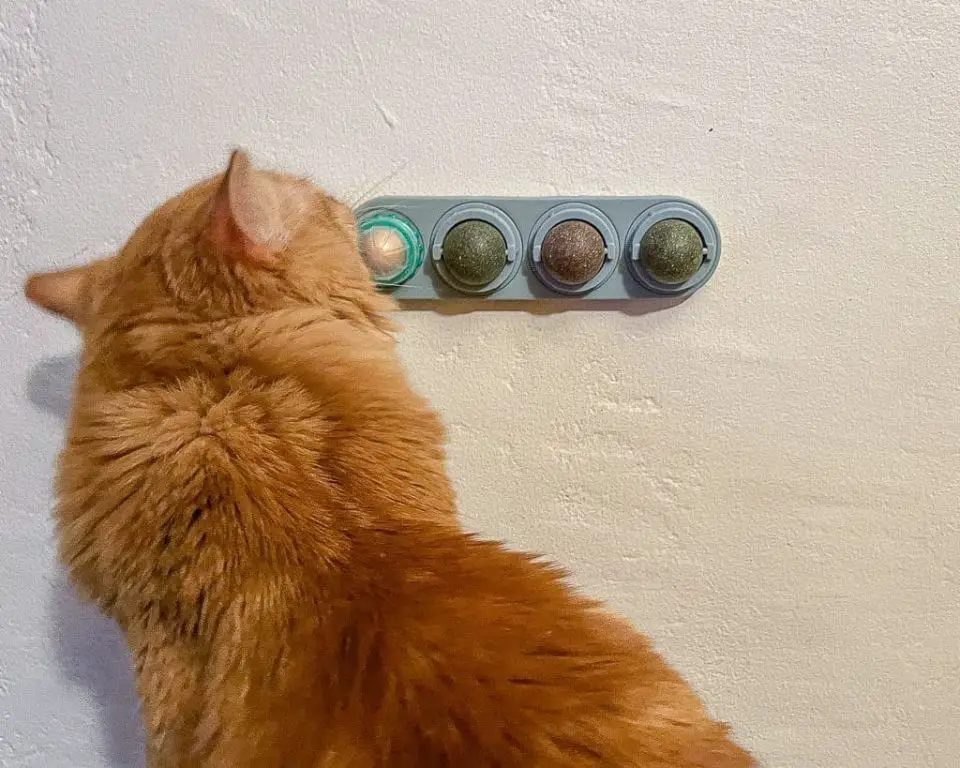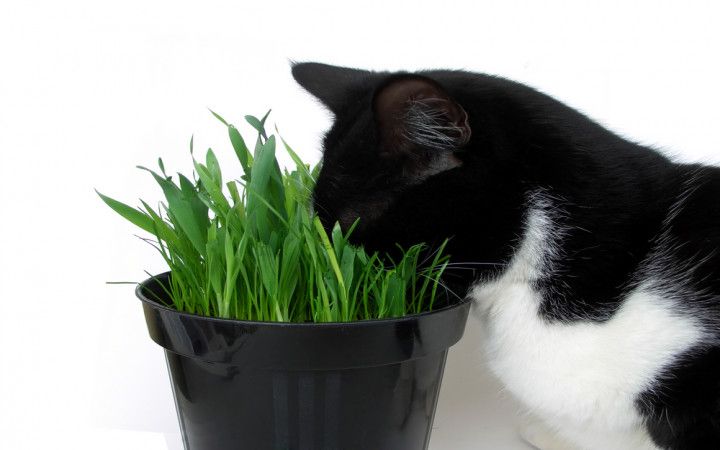Felines go crazy for it, but we barely bat an eye. Catnip has an intriguing and amusing effect on cats that leaves many cat owners curious. So what exactly causes cats to act so bizarrely when they get their paws on catnip? In this article, we’ll dig into what catnip is, why it impacts cats so strongly, and why we humans aren’t sent into the same frenzy.
We’ll uncover the active chemical compound in catnip that triggers cats’ response and why some cats are more sensitive to it than others. We’ll also explore how catnip affects other animals like dogs, why it can be a fun treat for some cats but make others aggressive, and tips for using catnip safely with your furry friends.
By the end, you’ll understand why cats get high on catnip while humans barely notice its effects.
What is Nepeta cataria (catnip)?

Nepeta cataria, commonly known as catnip, is a flowering herbaceous plant in the mint family Lamiaceae. It is native to parts of Europe, Asia, and Africa but has become naturalized in many other parts of the world (Source).
Catnip is a short-lived perennial plant that typically grows to around 3 feet tall and 2 feet wide. It has square, grooved stems and heart-shaped, toothed leaves that have a minty fragrance when crushed or bruised. The leaves are arranged oppositely on the stems and are covered in fine hairs. Catnip produces clusters of tubular two-lipped flowers that can be white, lavender, or light pink from summer to fall (Source).
In the wild, catnip is commonly found growing on dry slopes, roadsides, and waste areas in its native regions. It thrives in full sun with dry to medium moisture levels and prefers sandy, well-draining soils (Source).
Active chemical in catnip
The active chemical in catnip that causes a reaction in cats is called nepetalactone. Nepetalactone is an organic compound that belongs to the class of iridoids. This chemical activates the olfactory receptors in a cat’s nose and has a powerful effect on cats.
When a cat inhales nepetalactone, it binds to receptors in the cat’s nasal tissue, which triggers a response in the cat’s brain that releases dopamine. Dopamine is a neurotransmitter that makes cats feel euphoric, relaxed, and playful. This produces the typical excited reaction that people observe when cats are exposed to catnip.
Research shows that about two-thirds of domestic cats are strongly attracted to and affected by nepetalactone. The chemical effects appear to be much stronger in cats compared to other animals. Kittens younger than 6 months seem less sensitive, likely because their brain receptors are still developing.
Olfactory response in cats
Cats have a strong olfactory response when exposed to catnip. The active chemical compound that triggers this response is called nepetalactone. When cats inhale this compound, it binds to receptors in the olfactory epithelium tissue inside their noses. This stimulates neurons that send signals to the olfactory bulb and then other parts of the brain involved in processing scents and eliciting behavioral and physiological reactions.

Initially it was thought that catnip might stimulate the vomeronasal organ, an olfactory organ located in the roof of the mouth containing ducts leading toward the nasal cavity. However, research has shown that removal of this organ does not reduce the catnip reaction, indicating it is mediated primarily through the main olfactory system instead https://pubmed.ncbi.nlm.nih.gov/3834921/.
When nepetalactone enters the nasal passage and binds to olfactory receptors, this triggers a response involving rolling, flipping, rubbing, and other excitable behaviors. The specific neural pathways and mechanisms inducing the euphoric effects are still being investigated.
Why cats react strongly
The strong reaction that cats have to catnip is believed to be due to their olfactory system and the binding of nepetalactone to receptors in their nose. Domestic cats are especially sensitive
to the chemicals in catnip, much more so than many other cat species. Big cats like lions and tigers do not react nearly as strongly to catnip as domestic cats.
Research indicates domestic cats inherited genes for the catnip response from small wildcats in Africa and the Middle East that lived near nepeta plants. However, bigger wildcats like lions and tigers seem to have largely lost this genetic trait over time, perhaps because they were less likely to encounter catnip in the wild.
While all domestic cat species are vulnerable to catnip’s effects, some specific breeds have been found to be more sensitive, including Siamese and Burmese cats. The reason for this stronger reaction in certain cat breeds is not fully understood but may be linked to genetics.
Minimal reaction in humans
Humans lack the vomeronasal organ that allows cats to detect the nepetalactone in catnip (https://www.healthline.com/health/smoking-catnip). This specialized olfactory organ connects to the septal area of the brain, which controls emotions and behavioral responses to pheromones and other chemical triggers. Without this organ, the nepetalactone in catnip does not produce intoxicating effects in humans.

However, some mild relaxing effects may be noticed when humans consume catnip tea. The natural sedative activity of the chemical nepetalactone can induce drowsiness and relieve stress when catnip is brewed into a tea and ingested (https://www.banyantreatmentcenter.com/2022/05/17/can-you-get-high-off-of-catnip-stuart/). But the reaction is nowhere near the pronounced euphoric response seen in cats. Overall, catnip does not cause significant psychoactive effects in humans like it does in cats.
Other animal reactions
While cats have a strong reaction to catnip, other animals are not as affected. Dogs have little to no reaction to catnip. In one study, dogs were given catnip and showed no obvious changes in behavior compared to a control group that was not given catnip (Space for Life). Rodents like mice, rats, hamsters, and gerbils also do not respond to catnip. Birds such as chickens and parakeets show no interest in the plant.
However, some larger cats relatives of the domestic cat do respond to catnip. Big cats like lions, tigers, leopards, and lynx have all demonstrated responses like rubbing, rolling, and head shaking when exposed to catnip that are similar to domestic cat reactions. The chemicals in catnip that attract domestic cats also work on these larger feline species. Overall, the cat family seems to be uniquely sensitive to catnip compared to other animals like dogs, rodents, and birds (Quora).
When and how to give catnip
Catnip can be given to cats in various forms including toys and treats. Catnip-filled toys like stuffed animals allow cats to play and rub on the toy to release the catnip. These interactive toys provide mental stimulation and encourage exercise. Catnip toys should be used for 10-15 minutes per play session and then put away so they remain novel and engaging.
Catnip treats can also be given in moderation. Most experts recommend limiting catnip treats to 1-2 treats per day as too many can cause an upset stomach. Try to find organic catnip treats without unnecessary fillers. Freeze dried catnip or fresh catnip can also be sprinkled on food or given directly, but limit portions to around 1 teaspoon per day.
In terms of frequency, most veterinarians recommend limiting catnip to a few times per week at most. Daily access can make cats less sensitive to its effects over time. Rotating catnip toys helps keep the experience new and exciting for cats. Moderation is key when giving catnip to avoid overstimulation or gastrointestinal issues.
Downsides of catnip?

While catnip is generally considered safe for cats, there are some potential downsides to be aware of:
Overstimulation is a concern if too much catnip is given. Catnip can make cats very active and hyper, which could lead to aggressive or destructive behavior in some cases. It’s best to limit catnip exposure and monitor your cat’s reaction. Giving them a dedicated catnip toy or placing some dried catnip on a scratching post helps control overindulgence.
There are also myths that catnip is addictive or creates dependency in cats. However, there is no scientific evidence that catnip is addictive or habit-forming for felines. While they may enthusiastically seek out catnip, this response diminishes after being exposed to it for a while. Their interest returns after a break from catnip. Responsible catnip use does not lead to dependency issues.
Overall, catnip is safe when used moderately and can provide harmless enjoyment for cats. Monitoring your cat’s reaction and limiting availability helps avoid overstimulation. But catnip does not pose addiction or dependency risks for cats when used appropriately.
Conclusion
In this article, we explored the question of why cats get high from catnip but humans don’t. We learned that the active chemical in catnip, called nepetalactone, triggers a euphoric response when inhaled by cats. Their olfactory system and brains are uniquely wired to react strongly to this compound. Humans lack this sensitivity, so we do not experience catnip’s intoxicating effects.
It’s fascinating how catnip affects feline behavior, inducing playfulness and even frenzied activity in some cats. While catnip can be a fun treat for our feline friends, it should also be given in moderation. Understanding the science behind catnip’s appeal can help us enrich our cats’ lives while keeping their best interests in mind.

